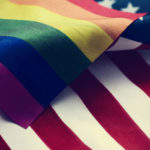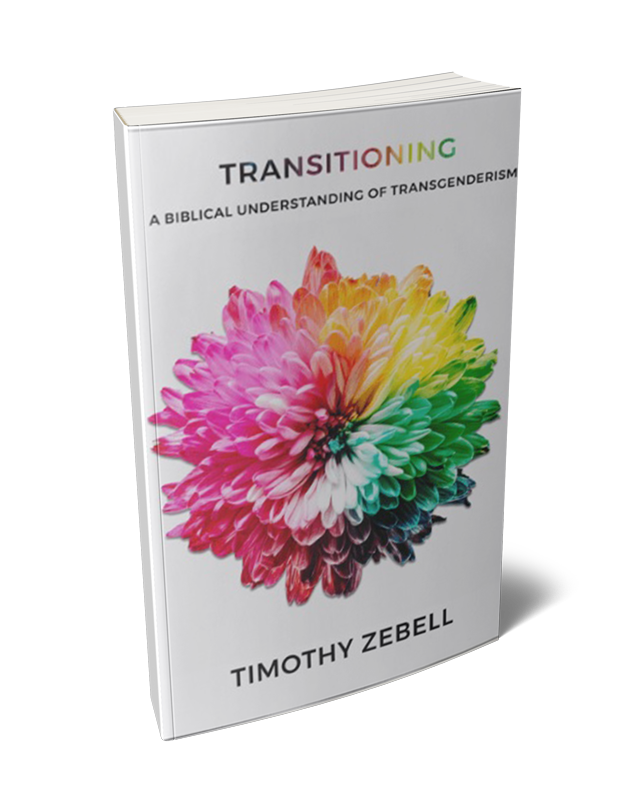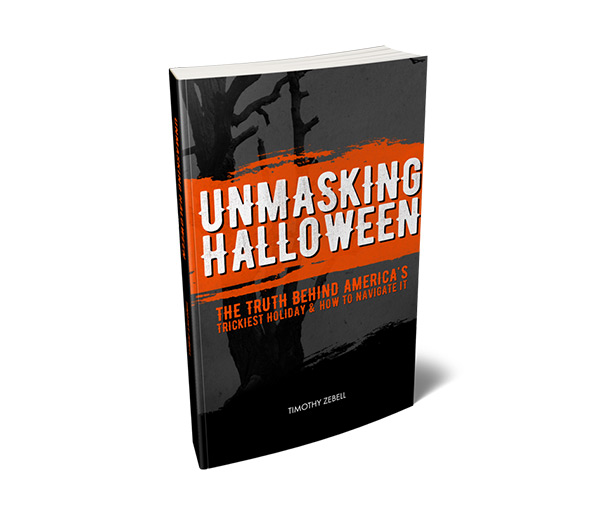In a 1996 speech on behalf of same-sex marriages delivered to the House of Representatives, Iowa Republican Ed Fallon declared:
Heterosexual unions are and will continue to be predominant, regardless of what gay and lesbian couples do. To suggest that homosexual couples in any way, shape or form threaten to undermine the stability of heterosexual unions is patently absurd.
And I know, you’ll say: “What about the gay agenda?” Well, just as there turned out to be no Bolsheviks in the bathroom back in the 1950s, there is no gay-agenda in the 1990s. There is, however, a strong, well-funded anti-gay agenda.[1]
Few things seem to rile homosexual activists more than an allusion to a gay agenda. Charles Bouley II has written a representative response on Advocate.com, which is a leading gay website, “Actually, let me flat out say it: There is no gay agenda. I hate to break it to all those antigay organizations out there that have made such a myth the bedrock of their bigotry campaigns, but really, it just doesn’t exist.”[2] Similarly, in 2006, the Gay and Lesbian Alliance Against Defamation, commonly known as GLAAD, listed “gay agenda” and “homosexual agenda” among their list of offensive terminology to avoid. They wrote, “Notions of a ‘homosexual agenda’ are rhetorical inventions of anti-gay extremists seeking to portray as sinister the lesbian and gay civil rights movement.” Not surprisingly, they recommended replacing the offensive “gay agenda” with the preferred title, “lesbian and gay civil rights movement.”[3]
The question must be asked, “Why is there such an aversion to linking homosexuality with an agenda?” As is implied by GLAAD’s comments, could it be that “agenda” indicates sinister intent, and it would be more accurate to speak of the gay civil rights movement? Setting aside for the moment the question of whether the requests of gay activists are, in fact, civil rights requests, surely history does not support the suggestion that “agenda” implies something sinister. Indeed, the civil rights movement frequently refers to their efforts as a “civil rights agenda.” Articles can be found such as “The Unfinished Civil Rights Agenda” and “A New Civil Rights Agenda: A New Leadership Is Making a Difference.” Even the Citizen’s Commission on Civil Rights refers to their efforts as an agenda on their website, saying that “Its work is grounded in the belief that the civil rights agenda benefits the entire country, not just particular interest groups.”[4] Likewise, the feminist movement freely refers to the “feminist agenda.” On the National Organization for Women’s website, articles can be found such as “NOW’s Progressive Feminist Agenda for Peace,” and in Australia, the feminist movement even sports the website FeministAgenda.org.au.[5] Clearly the use of the term “agenda” for a political movement is nothing new, and the term is not inherently sinister.
Make no mistake about it, the gay movement is a political movement. If there is any doubt, then consider just two prominent gay organizations. With an annual budget in 2014 of nearly $45 million,[6] The Human Rights Campaign once described itself on its website as “America’s largest gay and lesbian organization” which “effectively lobbies Congress; mobilizes grassroots action in diverse communities; invests strategically to elect a fair-minded Congress; and increases public understanding through innovative education and communication strategies.”[7] Likewise, according to their website, the National Gay and Lesbian Taskforce “works to build the grassroots political power of the LGBT community to win complete equality. We do this through direct and grassroots lobbying to defeat anti-LGBT ballot initiatives and legislation and pass pro-LGBT legislation and other measures. We also analyze and report on the positions of candidates for public office on issues of importance to the LGBT community.”[8]
Certainly, a movement that includes multiple well-funded organizations that build grassroots political efforts and lobby Congress can be considered a political movement. And every political movement has an agenda. After all, it would be a waste of time to lobby Congress for an unknown benefit.
Yet even beyond this, there is another reason why people reference a gay agenda. In 1990 Harvard-trained gay authors Marshall Kirk and Hunter Madsen wrote the book After the Ball: How America Will Conquer Its Fear and Hatred of Gays in the 1990’s, in which they presented a six-point comprehensive strategy for changing America’s attitude toward homosexuality. According to the authors, the purpose of this book was to expand and detail an already existing four-point agenda into what they called “a practical agenda” for homosexuals. Recounting the origins of this agenda, they wrote, “In February 1988 … a ‘war conference’ of 175 leading gay activists, representing organizations from across the land, convened in Warrenton, Virginia, to establish a four-point agenda for the gay movement.”[9] Certainly, when 175 leading gay activists representing organizations from across the country convene for a “war conference” to establish an “agenda for the gay movement,” it is fair to view the gay movement as an organized political movement that is following an agenda.
After the Ball is filled with specific tactics for accomplishing this “practical agenda.” Regarding these, they willingly admit, “The campaign we outline in this book, though complex, depends centrally upon a program of unabashed propaganda, firmly grounded in long-established principles of psychology and advertising.”[10] Most notable among these tactics are those of desensitization, jamming, and conversion. Regarding desensitization, the authors wrote, “To desensitize straights to gays and gayness, inundate them in a continuous flood of gay-related advertising, presented in the least offensive fashion possible. If straights can’t shut off the shower, they may at least eventually get used to being wet.”[11] They also wrote:
Gays must launch a large-scale campaign … to reach straights through the mainstream media. We’re talking about propaganda. … Carefully crafted, repeatedly displayed mass-media images of gays could conceivably do even more to reverse negative stereotypes than could the incremental coming-out of one person to another. … One of the special advantages of a media campaign is that it can—and should—portray only the most favorable sides of gays … When this is done, the picture labeled “queer” is aggressively painted over; prior images of dirty old queens or coarsened dykes are overlaid with pleasing new images of all-American and Miss American types (emphasis in the original).[12]
Equally important as the strategy of desensitization is something they referred to as “jamming.” According to the authors of After the Ball, “Jamming makes use of the rules of Associative Conditioning (the psychological process whereby, when two things are repeatedly juxtaposed, one’s feelings about one thing are transferred to the other) and Direct Emotional Modeling (the inborn tendency of human beings to feel what they perceive others to be feeling.)”[13]
One means of accomplishing this is to unfairly associate everyone who opposes homosexuality with the radical beliefs and actions of fringe extremists. They wrote:
In TV and print, images of victimizers can be combined with those of their gay victims by a method propagandists call the “bracket technique.” For example, for several seconds an unctuous beady-eyed Southern preacher is shown pounding the pulpit in rage against “those perverted, abominable creatures.” While his tirade continues over the soundtrack, the picture switches to heart-rending photos of badly beaten persons, or of gays who look decent, harmless, and likeable; and then we cut back to the poisonous face of the preacher. The contrast speaks for itself. The effect is devastating.
The viewer will ordinarily recoil from these images of victimizers, thinking automatically: “I don’t like those maniacs, don’t want to be like them, and would be ashamed if others thought I was like them. Surely I’m more compassionate and sophisticated, because I don’t share their irrational hatred of gays.” Every time a viewer runs through this comparative self-appraisal, he reinforces a self-definition that consciously rejects homohatred and validates sympathy for gay victims. Exactly what we want.[14]
A particularly effective means of jamming has been to redefine the homosexual as a victim. The authors wrote:
In any campaign to win over the public, gays must be portrayed as victims in need of protection so that straights will be inclined by reflex to adopt the role of protector. … The purpose of victim imagery is to make straights feel very uncomfortable; that is, to jam with shame the self-righteous pride that would ordinarily accompany and reward their antigay belligerence, and to lay groundwork for the process of conversion by helping straights identify with gays and sympathize with their underdog status.[15]
The final tactic presented in the book After the Ball for accomplishing this “practical agenda” for homosexuality is that of conversion. The authors wrote:
Desensitization aims at lowering the intensity of antigay emotional reactions to a level approximating sheer indifference; Jamming attempts to blockade or counteract the rewarding “pride in prejudice” … by attaching to homohatred a pre-existing, and punishing, sense of shame in being a bigot, a horse’s [expletive], and a beater and murderer. Both Desensitization and Jamming, though extremely useful, are mere preludes to our highest—though necessarily very long-range—goal, which is Conversion. It isn’t enough that antigay bigots should become confused about us, or even indifferent to us—we are safest, in the long run, if we can actually make them like us. Conversion aims at just this.[16]
In case there remains any doubt as to what is meant by “conversion,” the authors clarify:
We mean conversion of the average American’s emotions, mind, and will through a planned psychological attack, in the form of propaganda fed to the nation via the media. We mean “subverting” the mechanism of prejudice to our own ends—using the very processes that made America hate us to turn their hatred into warm regard—whether they like it or not.[17]
Without question, these authors were absolutely correct when they defined their book as a “practical agenda.”[18] These tactics offered in the book After the Ball have proven to be incredibly successful. Nevertheless, gay activists often seek to disassociate themselves from this landmark book and dismiss it as an obscure fringe work. Most likely, this is because the book is a raw and honest exposure of the gay movement’s tactics, goals, and intentional deception. Regardless, nearly every suggested tactic in the book has been utilized by the gay movement.
Were this not enough, there remains still more reason to believe that a gay agenda exists. Even beyond the admission by these gay authors of a war conference and a gay agenda, and beyond their use of the term “agenda” to describe their own work, an organized gay agenda can be clearly seen as early as 1972 in the Gay Rights Platform. The Gay Rights Platform, which was formulated in Chicago, Illinois, demanded:
- The repeal of all laws prohibiting private sexual acts involving consenting persons
- The repeal of all laws prohibiting prostitution, both male and female
- The repeal of all laws governing the age of sexual consent
- The repeal of all legislative provisions that restrict the sex or number of persons entering into a marriage unit; and the extension of legal benefits to all persons who cohabit, regardless of sex or numbers
- The enactment of legislation that child custody, adoption, visitation rights, foster parenting and the like shall not be denied because of sexual orientation or marital status
- The encouragement and support for sex education courses, prepared and taught by gay women and men, presenting homosexuality as a valid, healthy preference and a lifestyle that is a viable alternative to heterosexuality[19]
Certainly, this qualifies as an agenda, and this agenda was carefully followed by gay activists. These demands were an important part of the literature distributed at the 1987 March on Washington as well as the 1993 March on Washington—except that by 1993, several of these demands had already been met. Still, a list of the remaining demands was presented to Congress. This list included demands for:
- The recognition of same-sex marriages and domestic partnerships
- Adoption of children by homosexual couples
- The implementation of homosexual, bisexual and transgendered curricula at all levels of education
- The repeal of all sodomy laws
- The passage and implementation of graduated age-of-consent laws for sexual relations[20]
Today many of these 1993 demands have been met. In fact, as a nation, we are on the verge of consenting to every one of the Gay Rights Platform’s original list of demands. But this consent is not the result of a national epiphany. It is the result of persistent gay lobbying in the media and everywhere between the halls of government and the halls of our local public schools.[21] Surely it is both fair and accurate to refer to a “gay agenda.”
Be sure to read Timothy Zebell’s book Laid Bare: Uncovering the Relationship Between Homosexuality & the Gospel.
Free Downloads
Share...
1. Brown, Michael. A Queer Thing Happened to America, 26. Concord: EqualTime Books, 2011.
2. Brown, 27.
3. Brown, 25–26.
4. Brown, 41.
5. Brown, 41–42.
6. Brown, Michael. “Human Rights Campaign Accuses Christian Conservatives of Inciting Fear and Hate.” Christian Post, September 22, 2014. Accessed September 23, 2014. http://www.christianpost.com/news/human-rights-campaign-accuses-christian-conservatives-of-inciting-fear-and-hate-126801/.
7. Brown, A Queer Thing, 36.
8. “About Us.” National LGBTQ Task Force, n.d. Accessed September 23, 2014. http://www.thetaskforce.org/about_us/mission_statements.
9. Brown, A Queer Thing, 32–33.
10. Kirk, Marshall and Hunter Madsen. After the Ball: How America Will Conquer Its Fear and Hatred of Gays in the 90s, xxvi. New York: Doubleday, 1989.
11. Kirk, 149.
12. Kirk, 161, 169.
13. Kirk, 151.
14. Kirk, 189–190.
15. Kirk, 183.
16. Kirk, 153.
17. Kirk, 153–154.
18. Kirk, i.
19. Muehlenberg, Bill. Strained Relations: The Challenge of Homosexuality, 85. Melbourne: Culture Watch Books, 2014.
20. Muehlenberg, 84.
21. “Who We Are.” Gay, Lesbian and Straight Education Network, n.d. Accessed June 12, 2014. http://glsen.org/learn/about-glsen.
Unless otherwise noted, all Scripture quotations are taken from The Holy Bible, English Standard Version, copyright ©2001 by Crossway Bibles, a publishing ministry of Good News Publishers. Used by permission. All rights reserved.








